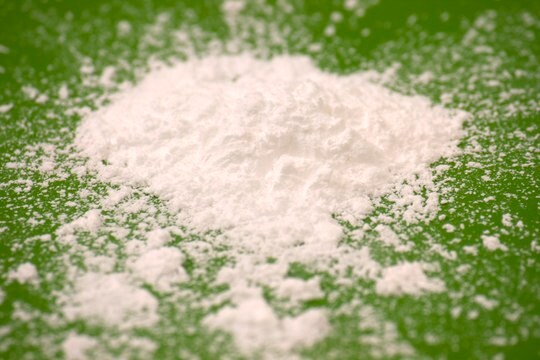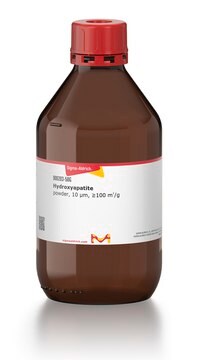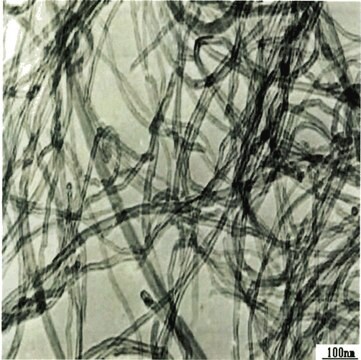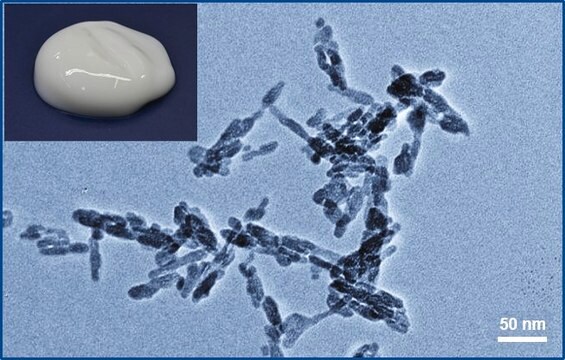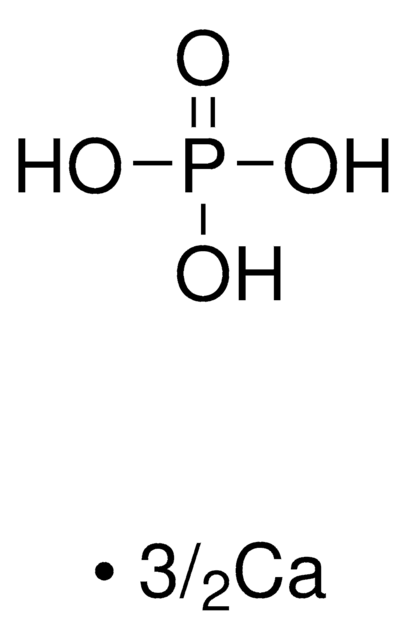702153
Hydroxyapatite
nanoparticles, dispersion, 10 wt. % in H2O, <200 nm particle size (BET)
Synonym(s):
Calcium hydroxide phosphate, Calcium hydroxylapatite, Calcium hydroxyphosphate, Nano hydroxyapatatite, Pentacalcium hydroxide triphosphate
About This Item
nanoparticles
Recommended Products
grade
for analytical purposes
form
dispersion
nanoparticles
contains
≤0.025 wt. % dispersant (non-metal based)
concentration
10 wt. % in H2O
surface area
14.3 m2/g , typical
particle size
<200 nm (BET)
pH
4-6
density
1.038 g/mL at 25 °C
SMILES string
[Ca++].[Ca++].[Ca++].[Ca++].O[Ca+].[O-]P([O-])([O-])=O.[O-]P([O-])([O-])=O.[O-]P([O-])([O-])=O
InChI
1S/5Ca.3H3O4P.H2O/c;;;;;3*1-5(2,3)4;/h;;;;;3*(H3,1,2,3,4);1H2/q5*+2;;;;/p-10
InChI key
XYJRXVWERLGGKC-UHFFFAOYSA-D
Looking for similar products? Visit Product Comparison Guide
General description
Application
- An implant material for bone substitute due to its chemical similarity to the inorganic component of bone and osteo inductive properties.
- A vehicle for gene and drug delivery because of its encapsulation capacity and affinity to several drugs and proteins.
- A pH responsive particulate emulsifier.
Features and Benefits
- Biocompatible
- Osteoconductive
- Stable under physiological conditions
- High mechanical strength
Legal Information
Storage Class Code
12 - Non Combustible Liquids
WGK
WGK 1
Flash Point(F)
Not applicable
Flash Point(C)
Not applicable
Choose from one of the most recent versions:
Already Own This Product?
Find documentation for the products that you have recently purchased in the Document Library.
Customers Also Viewed
Articles
Dendrimers are just one class of nano-sized materials that are explored to develop new life-saving technologies. Single-wall carbon nanotubes are used to make miniaturized sensors for DNA, pathogens, and chemicals – for example glucose sensors. Multi-wall nanotubes, nanoclays, and ceramic nanoparticles are incorporated in ultra-strong polymer nanocomposites that will be used in orthopedic, for example joint-replacement, applications.
A key challenge for nanomaterial safety assessment is the ability to handle the large number of newly engineered nanomaterials (ENMs), including developing cost-effective methods that can be used for hazard screening.
Our team of scientists has experience in all areas of research including Life Science, Material Science, Chemical Synthesis, Chromatography, Analytical and many others.
Contact Technical Service
